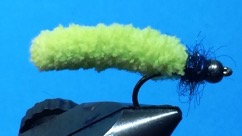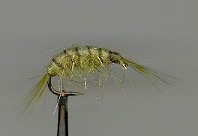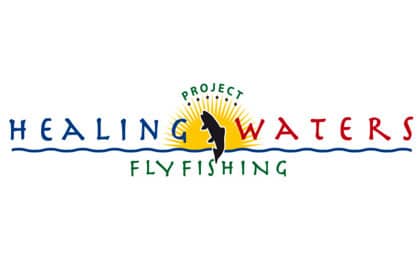By Andrew Frutiger
In our fifth and sixth installments of online fly tying seminars, Colin Flournoy led our veterans through tying complex scud and simple mop fly patterns. While the scud pattern can take the better part of 20 minutes to tie, the mop fly only takes about two minutes. Both are great additions to our veterans ever growing fly collection and, if the weather ever cools, I have no doubt that they will lead to many fish on the line.

Both flies are meant to be fished off of the bottom, adding a twitch every now and then to stimulate a reaction.
We also talked about planning a fly fishing trip, where preparation meets opportunity. Many of us just want to throw our gear in the back of the car and go fishing. When we get to the water, we throw all of our equipment on and go trucking down to the river (sometimes still in the process of putting our gear on). Once we get to the river, we can’t get our fly in the river fast enough (Ready, Fire, and then Aim).

Larry, with the help of the volunteers, gave some perspective on how we should all approach our next outing, taking the time to prepare and get organized: familiarize yourself with the stream (phone a friend/book a guide), check/clean your equipment, check the weather and water flows, and bring backup gear (two of everything, including a backup fishing spot). When you get there, be patient. Do not go storming down to the water. Instead, take your time, look around, look under rocks, see what is hatching, how the fish are feeding, see if you can see the fish (if you can, they can see you), and consider where you want to place your fly (which also means where you need to start your casting). Once you have an idea of what is happening, step back, select your fly (use a loop knot for more realistic movement), move to your spot (out of sight of the fish you are hunting) and enjoy the day.
If you have any questions or would like to participate in any of our upcoming fly tying sessions at Fort Detrick, please reach out to me at any time at andrewfrutiger@yahoo.com or go to our Facebook page at Project Healing Waters – Frederick Chapter.

You must be logged in to post a comment.